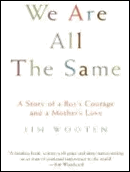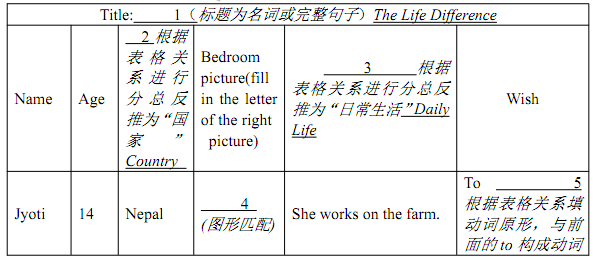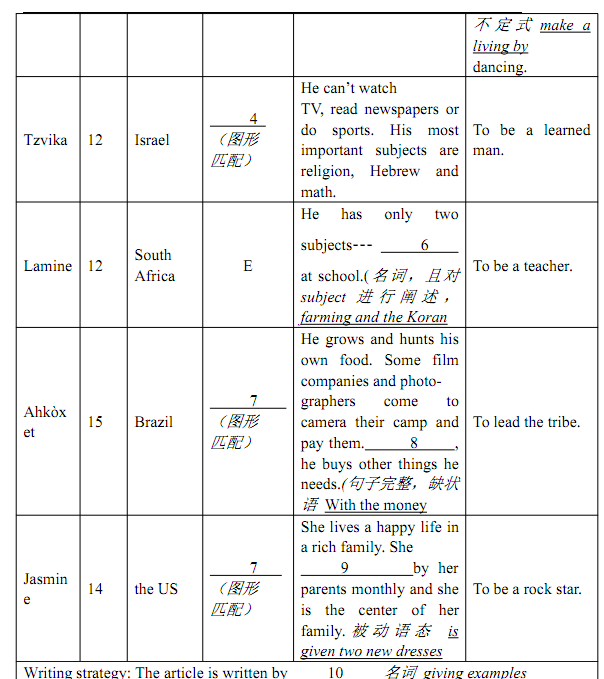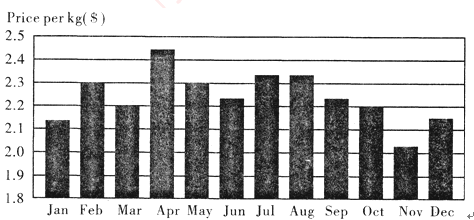题目内容
The first time I saw Jim Wooten I really understood him. He was a great TV news reporter. When he was reporting in Rwanda, one heartbreaking moment made a deep impression on me. When the camera showed all of the children who were dying, suffered from terrible diseases, Jim ended his piece by saying that when he got home, the first thing he was going to do was to put his arms around his own children. Then I realized that he was different, that he didn’t fall into any of the modern television-news tricks, that he was not giving us any awful, artificial(假的) television-journalist reports out of(出于) pity. Instead, I was watching a real reporter with a gift(天赋) for both words and slight differences.

Then I read his book, We Are All the Same, about his friendship with Xolani Nkosi, a South African boy who became the international spokesman for AIDS(艾滋病). It is about the friendship between Wooten and a black child who was ten years old and already dying of AIDS. It is also a book about a great teacher and his student. But the teacher-the one with real wisdom and understanding about life-is the little boy, not the journalist. And, finally, it’s about a love story of Gail Johnson, Nkosi’s white mother who does her best to save the boy, and their love for each other. When reading the book, I felt touched from time to time.
小题1:How did Jim Wooten feel when he saw the dying children in Rwanda?
__________________________________________________________________.
小题2:What would an ordinary journalist do on TV when he saw these dying children?
_________________________________________________________________.
小题3:How did Jim end his piece when he saw the dying children in Rwanda?
_________________________________________________________________.
小题4:Who is the teacher in the book, the little boy or the journalist?
_________________________________________________________________.
小题5:Why did Nkosi’s mother do everything possible to save the boy?
_________________________________________________________________.
小题6:What’s the writer’s attitude to Jim Wooten? How do you know that?
_________________________________________________________________.

Then I read his book, We Are All the Same, about his friendship with Xolani Nkosi, a South African boy who became the international spokesman for AIDS(艾滋病). It is about the friendship between Wooten and a black child who was ten years old and already dying of AIDS. It is also a book about a great teacher and his student. But the teacher-the one with real wisdom and understanding about life-is the little boy, not the journalist. And, finally, it’s about a love story of Gail Johnson, Nkosi’s white mother who does her best to save the boy, and their love for each other. When reading the book, I felt touched from time to time.
小题1:How did Jim Wooten feel when he saw the dying children in Rwanda?
__________________________________________________________________.
小题2:What would an ordinary journalist do on TV when he saw these dying children?
_________________________________________________________________.
小题3:How did Jim end his piece when he saw the dying children in Rwanda?
_________________________________________________________________.
小题4:Who is the teacher in the book, the little boy or the journalist?
_________________________________________________________________.
小题5:Why did Nkosi’s mother do everything possible to save the boy?
_________________________________________________________________.
小题6:What’s the writer’s attitude to Jim Wooten? How do you know that?
_________________________________________________________________.
小题1:He felt very sad./He was heartbroken.
小题2:He would give us some awful, artificial television-journalist reports out of pity./He would fall into some of the modern television-news tricks.
小题3:By saying that when he got home, the first thing he was going to do was to put his arms around his own children.
小题4:The little boy. (1分题)
小题5:Because she loved the boy./Because the boy was dying of AIDS.
小题6:He respected Jim./He admired Jim. The writer wrote/mentioned that Jim was a great TV news reporter.(3分题)
试题分析:短文大意:这篇是关于一名伟大的电视新闻记者吉姆伍滕的文章。他在卢旺达的报道,给作者留下了深刻的印象。
小题1:此题问“Jim Wooten看到卢旺达面临死亡孩子时的感觉”,所以答案需要填一个表达当时感觉的形容词,答案可以根据第一段内容进行提炼,所以答案可以为He felt very sad./He was heartbroken.等。
小题2:此题问“如何做普通的新闻工作者”,在文章第一段中讲述Jim Wooten的做法跟一般不同,所以需要将其中的否定句改成肯定句。即He would give us some awful, artificial television-journalist reports out of pity./He would fall into some of the modern television-news tricks.
小题3:此题问“方式”,回答时一般需要用介词by来引导。根据文章第一段“Jim ended his piece by saying that when he got home, the first thing he was going to do was to put his arms around his won children.”所以本题答案为By saying that when he got home, the first thing he was going to do was to put his arms around his won children.
小题4:此题的问题是“选择疑问句”,这也是整篇文章相对简单的一题(1分题),根据文章第二段中内容“But the teacher-the one with real wisdom and understanding about life—is the little boy, not the journalist.”,可知本题答案为The little boy。
小题5:此题问的是“为什么尽力救这个孩子”,文章第二段最后讲述的是“a love story”,所以答案可以是Because she loved the boy./Because the boy was dying of AIDS.
小题6:此题是一个开放题。首先问的是作者对Jim Wooten的态度,即崇拜或尊敬Her espected/love/admired him. 原因也可以从文章中找到,如:He was a great TV news reporter。

练习册系列答案
 天天向上一本好卷系列答案
天天向上一本好卷系列答案 小学生10分钟应用题系列答案
小学生10分钟应用题系列答案
相关题目















